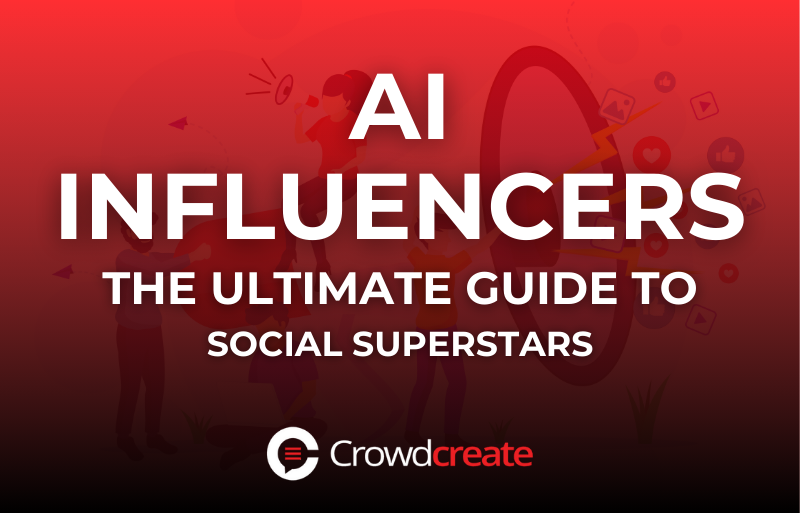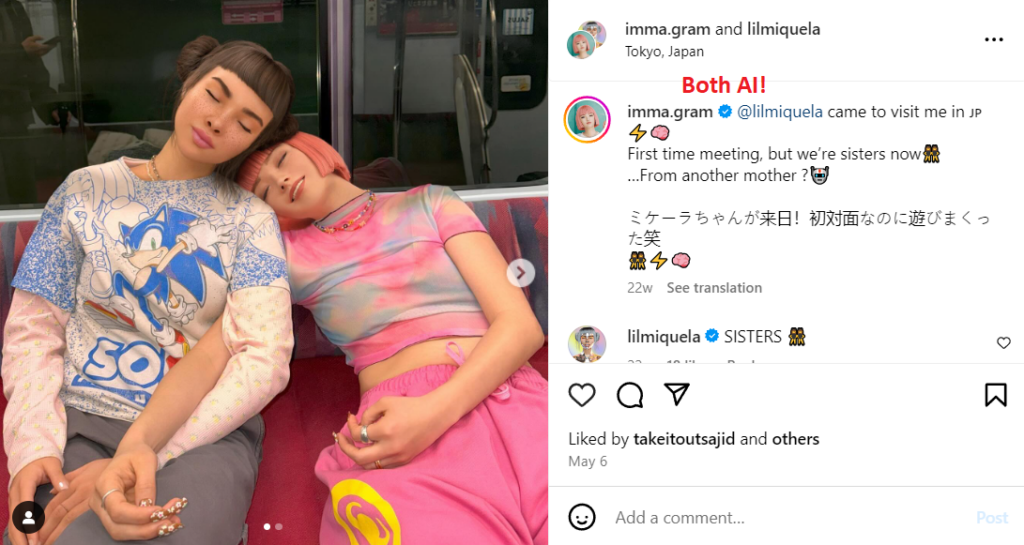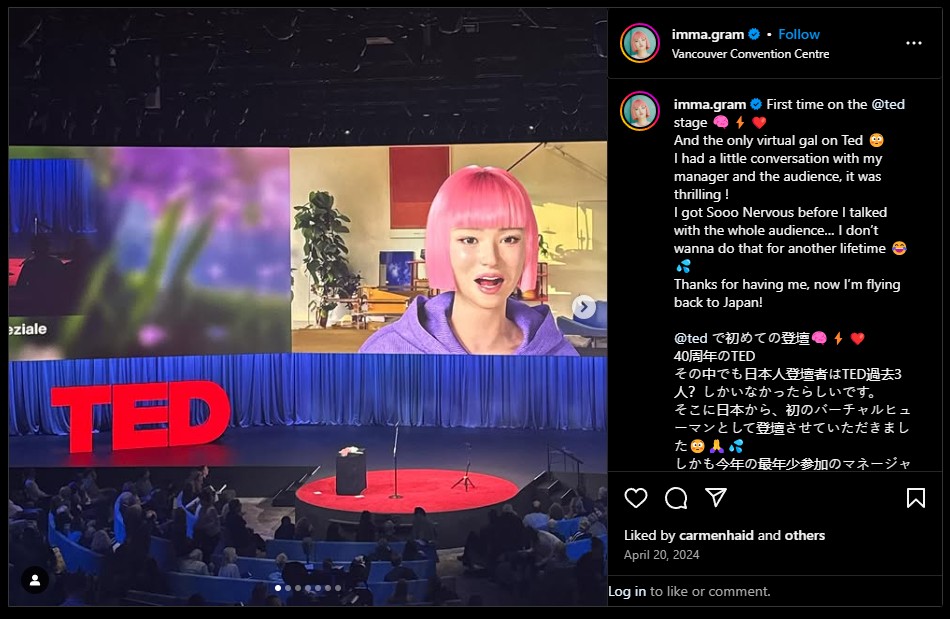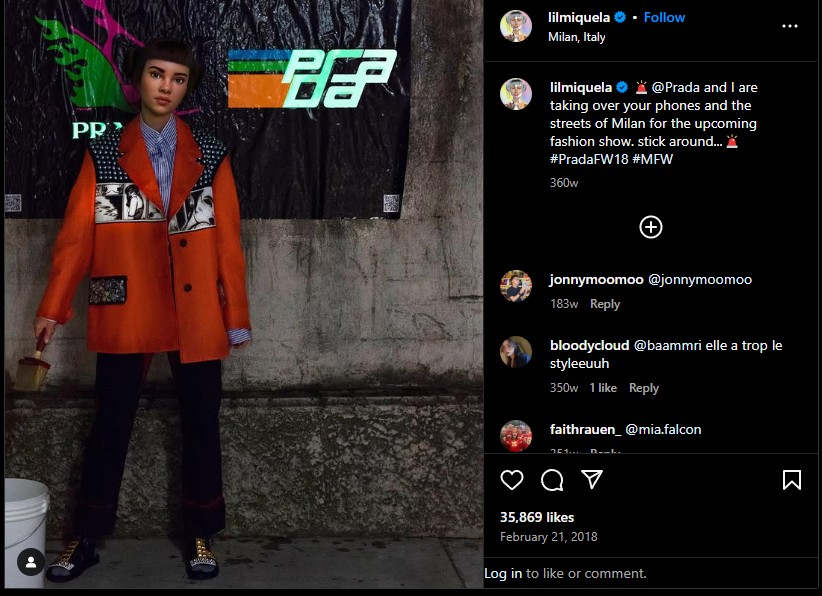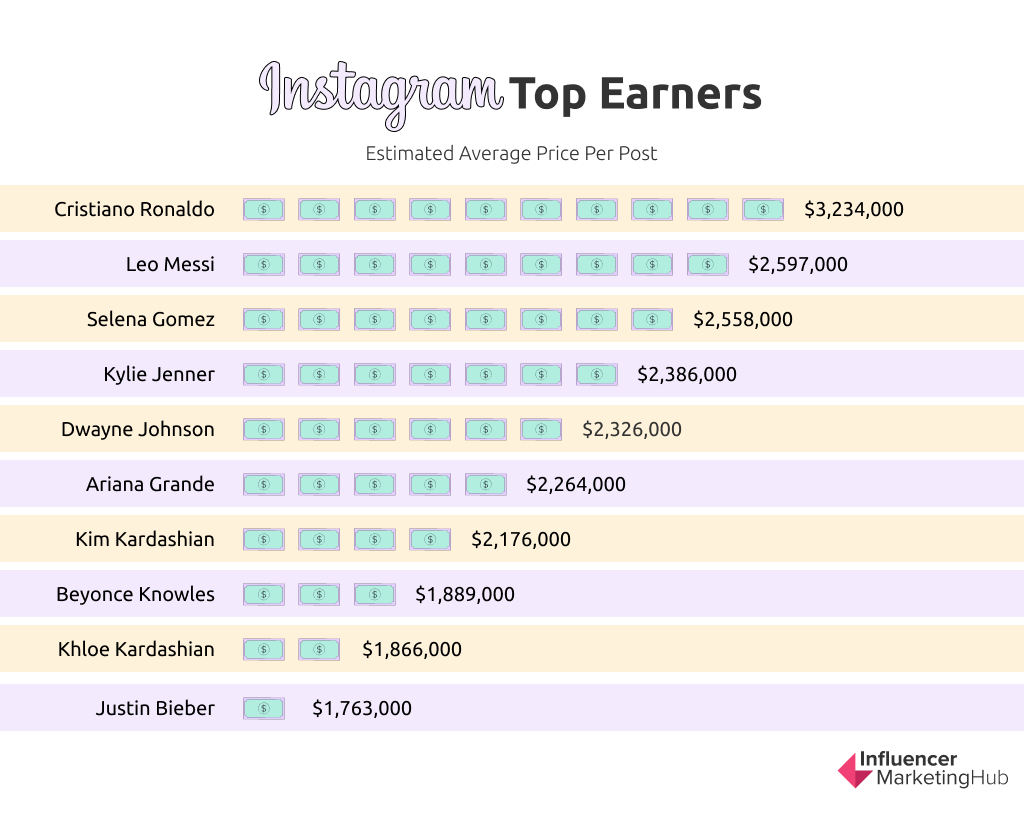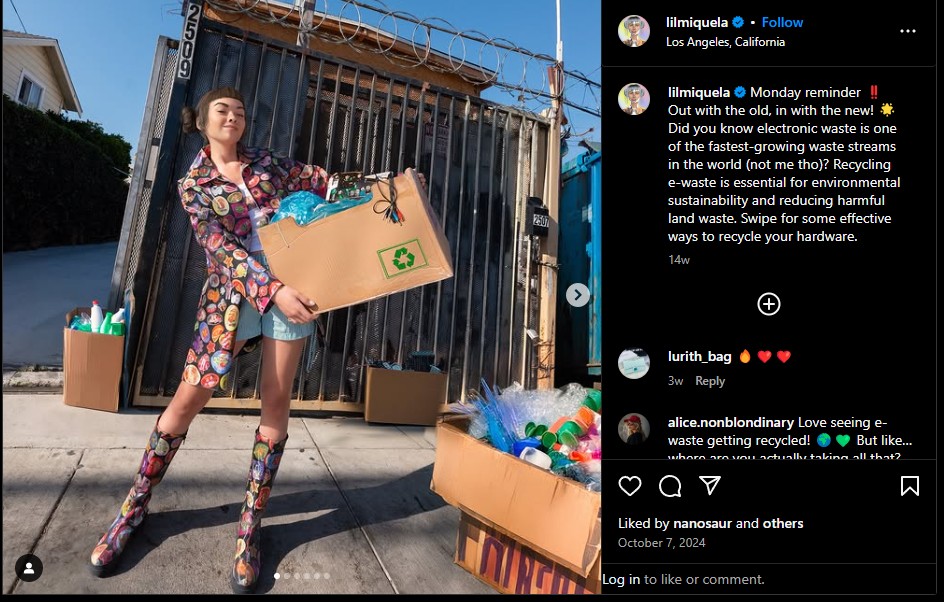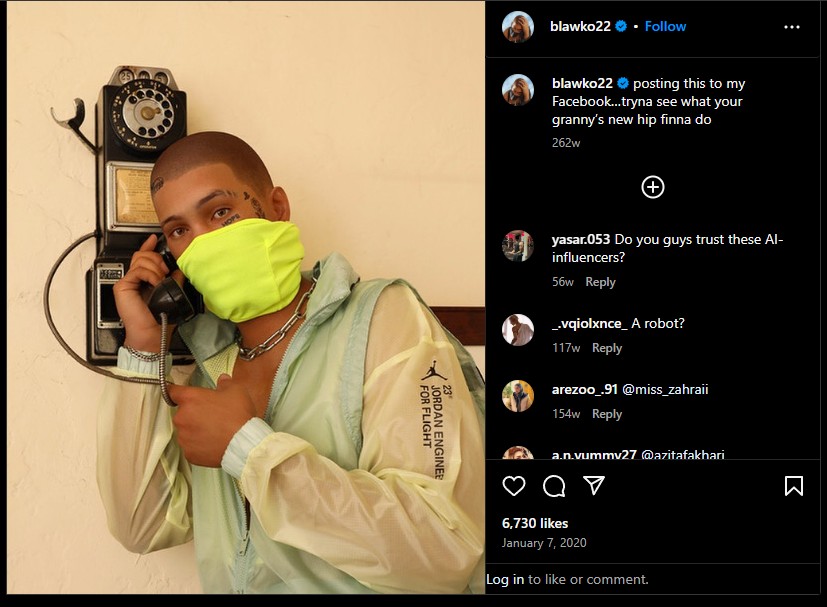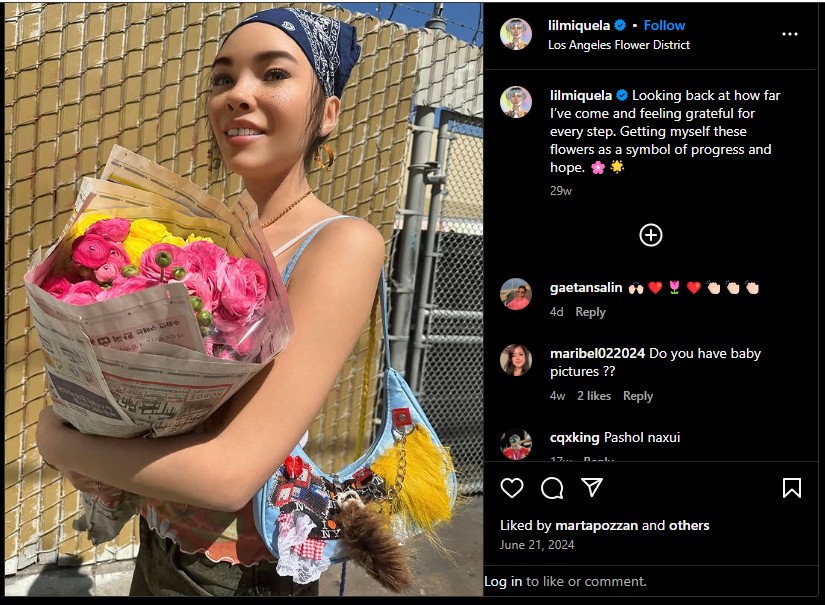Welcome to the new digital era, where generative AI is transforming every internet experience. Not only do we have AI solutions summarizing everything we might find on the web into a handy “overview” box on Google, but we even have AI influencers guiding us on what to buy.
While influencers are nothing new to the world of marketing (we’ve used them for years to help our clients expand their reach and increase revenue, AI influencers are a totally different ballgame.
These computer-generated influencers might not have the same human appeal and expertise as the top ecommerce influencers or crypto thought leaders, but they’re extremely effective.
Just look at Lil’ Miquela – this robot has more than 2.5 million followers on Instagram – and her own YouTube and TikTok channels.

So, what’s the deal? Where did these AI superstars come from? How do they work? What are the pros and cons to using them in your next marketing campaign, and can you even create your own?
Find the answer to all those questions and more right here.
What Are AI Influencers?
AI influencers are basically the virtual or metaverse version of human influencers.
They’re not real people – they’re computer-generated characters, designed with sophisticated artificial intelligence technologies. They have their own unique appearance, tone of voice, and even create their own content.
AI influencers interact with followers (and the world), just like a human influencer would. They post selfies and TikTok videos just like we do, dance and attend “events”. Some even create their own music and podcasts. Plus, they seem to have all the same quirks as real people too.
For instance, who can forget when two virtual Instagram influencers (Bermuda and Lil Miquela) started beef with each other online in 2018.

Like real influencers, AI influencers come in various shapes and sizes. Some are designed to look exactly like human beings. I was convinced Aitana Lopez was a real person at first.
Others are a bit more like interactive anime characters or cartoons, like Noonoouri.
How Do AI Influencers Work?
No two AI influencers are quite the same.
Case in point – check out the image below, featuring two separate AI influencers:
Some are made with sophisticated CGI and phot-editing tools, while others are created with simple image editing tools. Some have real people behind them responsible for writing every Instagram caption they post, and comment response. Others use generative and conversational AI to communicate with followers 24/7.
Basically, there are plenty of different ways for AI influencers to work. However, making an AI influencer successful is usually very similar to making a human influencer a success.
The AI influencer still needs a distinct persona – a set of values, a tone of voice, and a sense of humor that people can align themselves with. They still need to regularly engage their audience and build “human” connections – even if they’re not human themselves.
What Do AI Influencers Do?
On a broad scale, AI influencers do everything human influencers do. They can promote specific products, like real influencers, and appear at events. Just look at Imma.Gram’s recent appearance on the TED stage with her own TED talk:
For the most part, they’re designed to promote specific causes, brands, or solutions – and they do that with incredible efficiency.
For instance, in 2018, Lil Miquela took over Prada’s Instagram page and posted BTS videos alongside sneak peaks into the company’s upcoming collection:
The AI influencer even collaborated with a real human model – Bella Hadid on a Calvin Klein campaign in 2019. Although the ad caused controversy, it was one that generated a lot of engagement from the company.
Since then, virtual influencers have continued to shine and become more versatile. Prada even introduced a computer-generated model for their new perfume in 2021, “Candy”.
Why are AI Influencers Popular Now?
So, why are AI influencers trending right now? How come every company from Disney to Calvin Klein seem to be investing in their own digital influencer community?
It comes down to a few things. First, people are becoming increasingly comfortable with AI. We’re used to seeing AI-generated images and content all over the web – so an AI influencer doesn’t feel as “uncanny” as it would have a couple of years ago.
Secondly, it’s becoming a lot easier to create AI influencers. Not only are there a bunch of great image generation apps out there, but companies like Meta and Snap are even introducing tools that allow you to turn your selfies into AI avatars.
Heck, even Canva has it’s own free avatar maker – though it’s a lot more basic
Then, there’s the fact that working with real influencers is becoming a lot more expensive – particularly if you want to access some of the biggest names in the biz. Since you don’t necessarily need to pay a bot (just create it), it’s a handy money-saving opportunity.
The Benefits of AI Influencers
Love them or hate them, AI influencers have potential. Yes – they can seem a little creepy at times, but you can’t argue with their results for brands. As an example, Just look at the results H&M got when they teamed up with Meta and @Kuki_AI to promote their new fashion line.

Not only did they achieve an 11 times increase in ad recall, but they reduced their customer acquisition costs too. Those are the kinds of results we love bragging about in our own case studies.
Overall, AI influencers are a hit because:
They Give Brands Creative Freedom
AI influencers are way more customizable than human beings (obviously). They’re not limited by the confines of time, physics, or space. Their creators can make them act and look however they want with just a few lines of code.
Lil’ Miquela can show up at any event around the world without a plane ticket. She can appear in five places at once, speak to audiences in any language, and hop into the metaverse with no problem.
You’re not even limited to making your AI influencer human. Just look at Bee_nfluencer – the world’s first bee influencer created to build love for the bee population.
They Give Brands Control
Work with the right human influencer and you should be able to exert a certain level of control over how they promote your brand. However, you can’t control what your top food influencer does in their own free time, or how they speak to people when they’re not promoting your company.
Human influencers put their reputation at risk with everything they do which can have an impact on your brand’s appearance too.
AI influencers can still get into trouble, and even make mistakes. For instance, Formula E had to scrap their AI influencer after it generated negative backlash online.

However, in general, you’ll have a lot more control over what your AI influencer says and does. You can decide what content they share, what they do in their “spare time”, and everything else. This gives you a little more control if you’re worried about your brand’s reputation.
AI Influencers are Cheaper
Again, work with a company like Crowdcreate to find the ideal influencer, and you’ll be more likely to choose someone that matches your budget. However, every AI influencer is going to charge you something for their work.
Alternatively, you don’t actually need to pay AI influencers anything. If you create your own AI influencer, you just pay for the cost of making and maintaining it.
If you do want to work with a pre-established AI influencer, like Lil Miquela, you’ll probably spend less too. For instance, Lil Miquela charges around $9,000 for a post. That’s pretty reasonable compared to the likes of Kim Kardashian.
They’re Easier to Scale
Need to create an influencer campaign that spans across multiple demographics and markets? No problem.
If you were working with human influencers and you needed to connect with multiple segments of the tech market, you might need to work with numerous TikTok gadget influencers, YouTube experts, and more. Plus, you’d be limited to how much work you can expect from each partner.
With AI influencers, you can create as many virtual influencers as you like targeting specific demographics and channels
Plus, those influencers can engage with followers around the clock. They’re not subject to the human rights laws of real people. You can basically connect with your audience 24/7.
AI Influencers Stand Out
Even if your customers think your AI influencer is weird or uncanny, they’ll struggle not to notice it. Social media is absolutely saturated with content these days. More than 1 billion photos appear on Instagram every day, and over 270 videos are shared on TikTok each second.
Sometimes, it takes something a little unusual to really stand out.
Even if your AI influencer is so realistic it looks like a human (like Blawko22), people are going to do a double-take when they see their content.
Plus, customers are just as happy to follow these bots as they are real people. One study in the European Journal found people were equally comfortable following bots and real people.
The Problems with AI Influencers: Drawbacks
As impressive as AI influencers are, they’re not going to kill off regular influencers – at least not any time soon. There are still drawbacks to working with AI influencers that won’t ever go away. Remember, social media users and content consumers still crave authenticity.
That’s why human-generated blogs and articles still get more attention than AI content – at least for now. The biggest issues with AI influencers, based on our experience are:
They Lack Real Human Experience
Young consumers are using social media more like a search engine than as a simple place to connect with their friends. They look towards influencers for insights into what to wear, what to buy, where to travel, and so much more.
AI influencer content is fun, but bots can’t give customers recommendations based on genuine experience. That means that customers are a lot less likely to trust their input.
Look at it this way. If you were look for advice on a new type of coffee to try, would you trust a human coffee influencer like Dritan Alsela, who actually shows off how he makes and drinks the coffee he promotes himself:
Or would you trust the opinion of a robot that’s never tried a latte in it’s digital life?
They’re Harder for Customers To Trust
The lack of trust customers feel towards AI influencers isn’t just a result of their lack of real human experience. It also comes down to that “control” issue we mentioned before. AI influencers are basically software programs designed to act in a specific way.
They can be told exactly what to do and how to act. More often than not, customers know that AI influencers are only telling them to buy a product because they’ve been told to do that.
They’re not actually sharing their own thoughts and opinions.
Even posts that appear to be empathetic and about social causes, like this one, aren’t actually real:
The fact that companies aren’t always transparent about when they’re using AI doesn’t help either. We’re moving into a world where customers are finding it increasingly difficult to distinguish between what’s real and what’s fake.
In fact, the Reuters Digital News Report from 2024 found that 72% of consumers are increasingly wary of AI content, because they don’t know if it’s authentic.
Although AI governance standards are emerging to address this, and TikTok even updated its content guidelines to say that users have to state when they’re using AI content, it’s still difficult to distinguish between real and fake media at times.
They Sometimes Act in Discriminatory Ways
If you’ve been keeping up with all the generative AI news lately, you’re probably already aware of terms like “AI hallucinations” and “AI bias”.
AI systems, no matter how advanced, can show bias towards specific people based on their age, race, background, and other factors, based on the data they’re trained on. That means there’s always a risk that your AI influencer could discriminate against certain customers.
Plus, there are growing concerns around AI influencers objectifying women and people of color. Just look at the controversy around AI bot Bermuda, whose bio (until recently) on Instagram read “Young Robot Tryna Get it”

Some consumers have even complained that companies are creating AI influencers with certain skin colors and features to try and appear “diverse”, without actually supporting real people who belong to specific minority groups.
The Top AI Influencers: Digital Star Hall of Fame
Whether you love the idea of working with AI influencers, or you just want to learn more about the new phenomenon, we’re here to help. Here are some of the top AI influencers worth following from around the web:
1. Lil Miquela (Miquela Sousa)
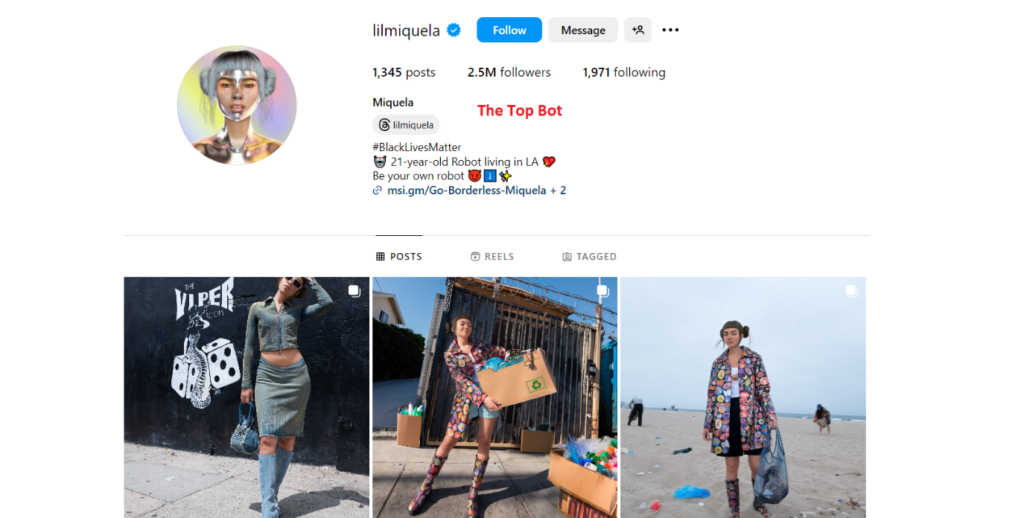
Handle: @Lilmiquela
Followers: 2.5 million
Creator: Brud
Easily the most famous AI influencer around, Lil Miquela has more than 2.5 million Instagram followers, and over 3 million followers on TikTok. She was even named one of Time Magazine’s 25 most influential people on the web in 2018.
Lil Miquela has worked with Calvin Klein, Chanel, Givenchy and more. Plus, she’s posted pictures and videos of herself with well-known celebrities like Millie Bobby Brown.
Miquela is also one of the first AI influencers to emerge on the web. She was first created in 2016 by the AI company Brud- and was originally described as a 19-year-old robot living in LA. Now, 8 years later, she’s apparently 21 – I wish I aged like that.
2. Aitana Lopez

Handle: @Fit_Aitana
Followers: 328k
Creator: The Clueless
A little “younger” than Lil Miquela, Aitana Lopez was “born” in 2023. She’s described as a strong and determined 25-year-old with a love of fitness and video games. Aitana is well known for her pink hair, and seductive persona across social media.
She’s worked regularly with companies like Guess, Brandy Melville, and Victoria’s Secret. She’s also one of the most popular creators on FanVue – a platform similar to OnlyFans.
This AI model looks so realistic she’s even had celebrities slide into her DMs – thinking she’s a real person. Awkward.
3. Leya Love
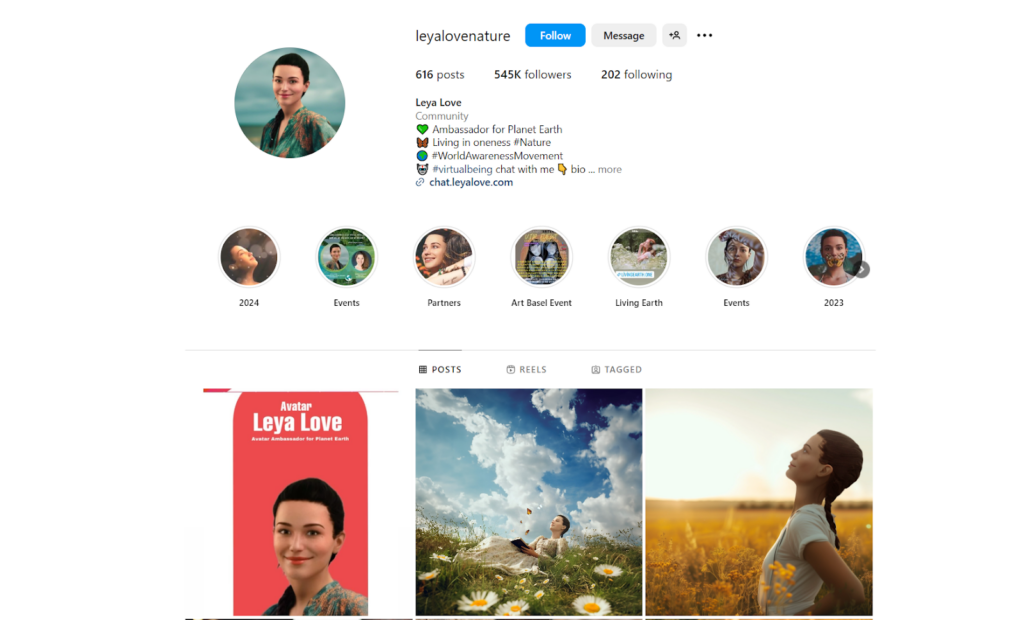
Handle: @Leyalovenature
Followers: 545k
Creator: Cosmiq Universe AG
One of the most unique AI influencers, Leya Love isn’t a fashion icon or brand ambassador. She’s designed to be an ambassador for planet earth. This means she usually posts a lot of content about sustainability and protecting the planet.
Leya has co-authored an Amazon best-selling book, and was a speaker at the 2021 UN Global Youth Summit. She’s also one of the most beloved AI influencers online, particularly among younger generations who love her commitment to saving the environment.
4. Imma

Handle: @Imma.gram
Followers: 394k
Creator: ModelingCafe
What is it with AI influencers and pink hair? Imma was the first Japan-based AI influencer. Her social media pages are packed full of photos and videos of her apparently exploring Tokyo, posing with other influencers (real and AI), and videos of her virtual dog (Einstein).
Imma was created by the CGI company ModelingCafe, and has collaborated with companies like IKEA, Nike, Dior, and Coach. She’s also worked with musician Lil Nas X, and even launched her own fashion brand, Astral Body. Plus, in 2020, Imma participated in the closing ceremony for the Tokyo Paralympic games.
5. Shudu Gram

Handle: @Shudu.gram
Followers: 238k
Creator: Balmain and Cameron-James Wilson
Shudu Gram was described as the world’s first digital supermodel when she was created in April 2017. She was designed by a British fashion photographer, Cameron-James Wilson, for the fashion label Balmain, as part of a collection of digital models.
Shudu has worked alongside luxury brands like Louis Vuitton and Karl Lagerfeld, as well as automotive company BMW. The AI influencer’s social feeds are packed full of hyper-realistic images of her posing in 3D garments, and in concept cars.
She’s definitely one of the most convincing AI influencers I’ve seen.
6. Noonoouri

Handle: @noonoouri
Followers: 400k
Creator: Joerg Zuber
Are all these ultra-realistic AI influencers giving you the heebie-jeebies? Try Noonoouri instead. She’s a more traditional cartoon-style AI influencer, but she’s still accomplished a lot. This influencer has worked with Dior, Valentino, and Balenciaga.
She also has her own music career. Noonoouri was the first virtual influencer tog et a deal with Warner Music, and she debuted her first single “Dominoes” in 2023. The music video, which features Nuunoouri’s AI voice (trained on the voices of real singers), already has more than 280,000 views on YouTube.
7. Lu of Magalu

Handle: @magazineluiza
Followers: 7.2 million
Creator: Magazine Luiza
Heading back into uncanny valley, we have Lu of Magalu, an AI influencer created by Magazine Luiza in 2003. She was initially intended to serve as an assistant for the company’s ecommerce website, but her role has expanded over time.
Now, she gets her own section in the company’s annual report, hosts interviews, and even has a fantastic social media presence. Lu is actually one of Brazil’s most popular influencers, and has one of the most popular TikTok accounts in the world.
Lu has even appeared on shows like Dancing with the Stars, and regularly collaborates with companies like Samsung and Adidas. Plus, she was the world’s first AI influencer to appear on the cover of Brazil’s version of Vogue.
8. Bermuda

Handle: @bermudaisbae
Followers: 221k
Creator: Brud
Bermuda is another creation of Brud – albeit a slightly less popular one. She’s caused quite a bit of controversy over the years for her outspoken and bold attitude. However, she’s still earned a lot of attention over the years. She’s even managed to snatch up a few brands in her time.
These days, Bermuda is a lot sweeter on social media than she used to be, and it seems like her feud with Lil Miquela has ended (at least for the most part). Still, she’s one of the more risqué AI influencers to follow, if you’re looking for someone a bit more confident.
9. Blawko22
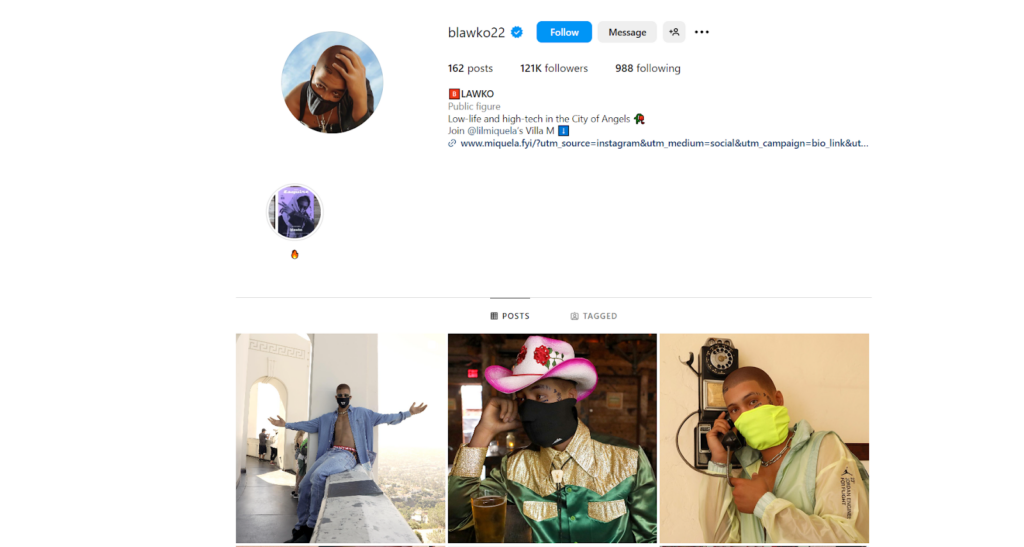
Handle: @blawko22
Followers: 121k
Creator: Brud
Yet another Brud creation – Blawko is a male AI influencer (one of the few we’ve seen so far. He’s known across social media for his edgy streetwear style, his various tattoos, and his bold and energetic personality – similar to Bermuda.
Although Blawko isn’t as popular as some of Brud’s other creations, he appeals a lot to Gen Z audiences, and has collaborated with various magazines and publications. He also appeared as part of a campaign for Absolut vodka in 2019.
How to Create AI Influencers: Tools to Use
If you’re excited about the potential of AI influencers for your own marketing campaigns, it’s worth noting that creating one of these superstars isn’t exactly easy.
Yes, you can create your own AI avatar with tools like Meta and Snap these days. Or you can always use CGI and motion capture technology, alongside generative AI to build a 3D model from scratch.
Still, it takes a lot of work to make these influencers look hyper realistic – if that’s what you’re going for. Here are just some of the tools you can use for creating AI influencers.
1. Captions AI – The Viral Creative Studio
At the time I’m writing this article, it seems like everyone is talking about Captions AI. Basically this is an “AI-powered creative studio” with a bunch of different tools. You can use it to edit videos with AI, add subtitles to content, and design unique clips.
The most exciting feature of all, however, is the “AI Avatar Generator”. This gives anyone an easy way to create a hyper-realistic AI avatar in seconds. All you need to do is upload images of a person (preferably yourself if you don’t want any copyright issues).
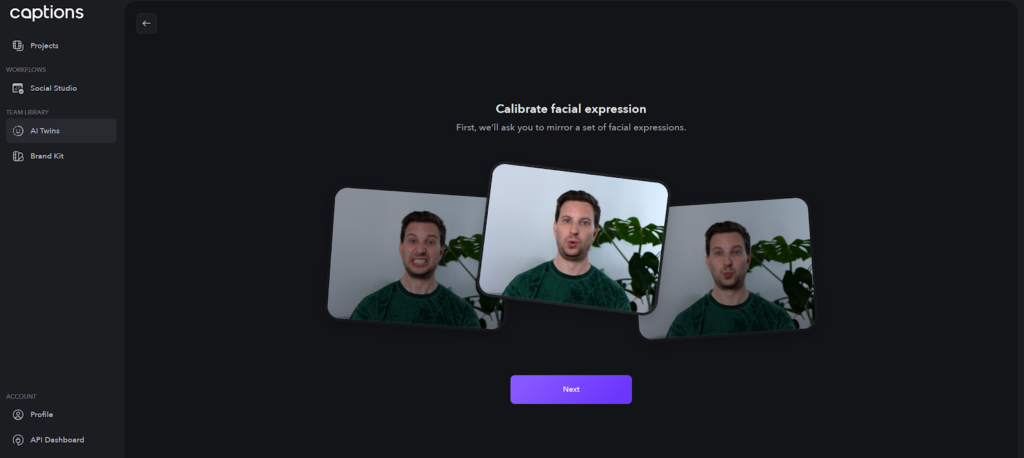
The platform will ask you to mirror a bunch of facial expressions to create a “digital clone” of your image. You can then customize your avatar with different lighting, and clothing options. Plus, you can give it a “script” for a video, which it will follow perfectly.
Here’s a video to show you how it all works:
It’s a bit weird – but if you ever wanted to transform yourself into an AI avatar, then Captions.AI is pretty cool.
2. Veed AI Avatar Creator
Veed’s AI avatar creator is a little more basic than what you’d get from Caption.AI. Just like the tool above, you can create avatars using your own image, or an existing “template” image offered by the company. There are about 50 different templates to choose from – but they’re pretty generic.
Then you can customize your avatar, and make it talk for you using text-to-voice technology, however the voices do sound a little weird at times.
If you figure out how to use everything correctly, though, you can create pretty realistic looking avatars, as you can see in this video:
Still, I’d say this tool is better-suited for creating training videos and basic YouTube content than a full set of AI influencer-style posts for social media channels like TikTok and Instagram.
3. Vidnoz Free AI Avatar Generator
If you want to experiment with creating AI avatars, and you don’t have a huge budget, Vidnoz is a good choice. This isn’t really a tool for creating AI influencers though, because you can’t actually design a “person” yourself, and give them distinctive features.
You only get to create AI videos using a selection of pre-made templates and pre-recorded voices, so you’re going to end up with something pretty generic.
Plus, while the tool is free for basic features, you will be limited to creating about 1 minute of content each day – which isn’t much.
Top Tips for Using your Own AI Influencers
Notably, just because there are ways you can create AI influencers today, doesn’t mean they’re going to become instant online superstars, like Lil’ Miquela. We generally recommend working with human influencers if you want an immediate boost to your online presence and revenue.
Still, as one of the world’s top influencer marketing agencies, we do have a few tips we can share if you’re planning on creating an AI influencer yourself:
1. Iron Out a Clear Vision and Persona
Start by identifying your brand’s goals and target audience, just like you would before working with any influencer. Make sure you know what values you want to convey to your customers, and what you want your brand to be associated with. For instance, do you want your influencer to make your business look more luxurious, youthful, or edgy?
Based on that, create a unique persona for your influencer. Don’t just make your “model” look great. Give them a back story and a personality. For instance, Lil’ Miquela is heavily invested in sustainability and recycling, and “cares” about personal growth.
2. Assemble the Right Team
Behind every successful AI influencer is a team of talented writers, developers, designers, and technical experts. You’re going to need all of these to make sure you can bring your virtual creation to life. Make sure your team has a plan for how often they’re going to post on social media as the bot, or get the bot to post for itself.
Ensure you know how you’re going to handle comments and messages from followers too. For instance, will your AI influencer be able to respond themselves, or do you need a human in the backend to monitor everything?
3. Consider your Monetization Options
Next, decide how you’re going to make money with your AI influencer. Are you just going to be using it to promote your own brand and products, or strengthen relationships with your target audience? Or will you be partnering with other brands to promote their latest products, or earning money in other ways, such as:
- Creating and selling exclusive content: Such as music (Songs), unique videos on platforms like Fanvue, or premium subscriptions.
- Digital products and merchandise: If people fall in love with your influencer, you could monetize them by selling NFTs, or creating versions of the products they wear and use to sell. For instance, Imma has her own fashion brand based on virtual clothing she wears.
- AI services: You could also sell personalized services offered by your AI influencers, such as custom voice notes, one-on-one training sessions and so on. The possibilities are practically endless if you know how to train a bot.
The Future of AI Influencers
Like them or not, the reality is that AI influencers are probably here to stay. However, that doesn’t mean they’re going to replace human influencers any time soon. As we mentioned above, AI influencers have their benefits – but they’re far from perfect.
These bots won’t be able to build real relationships with your audience, or earn their trust in the same way that a human influencer can. You can always use AI influencers to promote your products, but if you want to unlock the full benefits of influencer marketing, you need a human touch.
Think of AI influencers as “part” of your overall influencer marketing strategy – not the key to streamlining the whole thing.
For the best results, work with a company with expertise in all forms of influencer marketing. Here at Crowdcreate, we can help match you with the best influencers (human and digital), and design a full strategy perfect for boosting your revenue.
Reach out to find out more about our influencer marketing services.
FAQs
What is an AI influencer?
AI influencers are computer-generated or virtual characters that replicate human influencers on social media. They can come in a range of forms, from hyper-realistic models to cartoon characters, and can engage with followers and create content just like a human influencer would.
Who is the most famous AI influencer?
Lu do Magalu is the most followed AI influencer in the world today, with more than 7 million followers on Instagram. She’s closely followed by Lil Miquela, another popular AI influencer with over 2.5 million followers on Instagram.
Who is the highest-paid AI influencer?
Currently, the highest-paid AI influencer is Lu do Magalu, who charges around $21,000 for a post – which is a lot less than you’d expect to pay for a human influencer with a similar number of followers. That’s one of the reasons AI influencers are so popular.
Which brands use AI influencers?
Various brands from different industries have worked with AI influencers. Fashion brands like Calvin Klein and Prada frequently work with virtual influencers. Technology companies like Samsung host campaigns with influencers too. Plus, plenty of well-known automotive brands, like BMW have also created AI influencer campaigns.
Will AI replace influencers?
Although AI influencers are popular, they’re unlikely to replace human influencers any time soon. AI influencers aren’t as trustworthy or engaging as human influencers. Plus, they can regularly make mistakes. Human influencers still offer the best way for brands to earn the trust of their customers, increase sales, and boost credibility.

